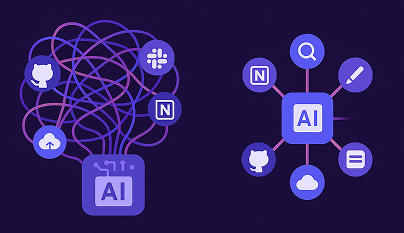
How to Smart Load Balance OpenAI Endpoints
This post outlines the challenges of OpenAI rate limiting and proposes a solution utilizing techniques like dynamic adjustment of limits, smart retry scheduling, and resource prioritization. It provides strategies and tips to setting priority groups, defining quota management, retries with exponential backoff to prevent interruptions during peak demand periods.
The Problem: OpenAI Rate limiting
In a technical context, service providers, such as OpenAI, implement rate limiting to manage resource allocation effectively, ensuring fair usage and availability for all their users.
Rate limits are essential for OpenAI to manage the overall load on its infrastructure. If requests to the API increase dramatically, it could tax the servers and cause performance issues. By setting rate limits, OpenAI can ensure a smooth and consistent experience for all users.
These limits are often quantified in terms of Tokens Per Minute (TPM) and Requests Per Minute (RPM), setting maximum thresholds for data processing and API call frequencies, respectively.
When these thresholds are exceeded, either due to a surge in demand or excessive use, the server responds with an HTTP 429 (TooManyRequests) status code, signaling that the rate limit has been breached.
In response to a 'Retry-After' request, the server sends a specific status code, accompanied by a header. This header serves as guidance to the client, indicating the recommended cooling-off period before attempting subsequent requests. This mechanism is crucial for maintaining service stability and avoiding over-utilization of the server's resources.

Solution: Smart Load Balancing for OpenAI
To address rate limiting challenges, a sophisticated flow of resilience mechanisms with an API Egress Controller can effectively manage resource distribution.
Dynamically adjusting TPM and RPM limits based on usage analytics and demand forecasts allows services can preemptively navigate such load challenges.
Utilizing the “Retry-After” header for smart retry scheduling, alongside a resource prioritization queue, ensures service resilience and maintains performance, even during peak demand periods.
This strategic approach facilitates smoother operation and prevents service interruptions caused by exceeded rate limits.
Suggested Solutions with Lunar.dev Flows:
1. Set ‘Priority Groups’
Let’s begin with the concept of "priority groups", which allow for the strategic allocation of traffic based on the availability and throttling status of OpenAI backends, prioritizing higher-tier backends first and automatically shifting to lower-tier ones upon reaching throttling limits.
This mechanism ensures efficient quota utilization across instances, optimizing resource use by consuming available quotas on preferred instances before resorting to fallback options, thereby enhancing overall service reliability and performance efficiency.
As the user, you’ll need to define the priority of the different OpenAI endpoints, according to your business logic.
Examples:
- Geography Prioritization - Based on regional geography, the OpenAI endpoint serves your customer, reducing latency.
- Model Prioritization - Models vary in availability and features across OpenAI regions. Therefore, you might want to define priority based on model availability or even max requests (tokens)

2. Define ‘Quota Management’
Quota management involves setting rate limits on deployments within a subscription. Governed by a global limit known as a "quota," it is allocated on a per-region, per-model basis. This allocation is measured in either Tokens per time window or requests per time window .
This feature provides flexibility in managing resource utilization, allowing the specification of limits based on either the number of tokens consumed or the number of API requests made. The standard conversion ratio is 6 RPM per 1000 TPM.
3. Define ‘Retry’
The "retries with exponential backoff" technique revolves around re-executing operations that have failed. It employs waiting periods that increase exponentially after each retry until a maximum number of attempts is reached.
This approach is particularly effective in managing large-scale deployments, ensuring scalability when accessing cloud resources or OpenAI services. It accommodates temporary unavailability or rate limit errors (such as too many tokens per second or requests per minute), ultimately minimizing error responses for numerous concurrent users.
4. Define ‘Account Orchestration’
The "account orchestration" flow is a strategic approach to optimizing resource utilization and enhancing service availability by rotating between different accounts. This addresses the limitation that each Azure subscription can host a maximum of 30 Azure OpenAI resources per region, subject to regional capacity.
Example:
This approach enables flexible deployment configurations, such as distributing a total quota of 240,000 TPM for GPT-3.5-Turbo across multiple deployments within the Azure East US region. This can involve a single deployment utilizing the entire quota, two deployments with 120K TPM each, or various combinations. The goal is to ensure that the aggregate usage does not exceed the allocated quota in that region.
.png)
Takeaways:
In this blog post we outlined the challenges associated with OpenAI rate limiting and presented several solutions through smart load balancing, utilizing techniques like dynamic adjustment of limits, smart retry scheduling, and resource prioritization.
To avoid handling such rate limiting issues across environments and at scale, implementing strategies such as setting priority groups, defining quota management, retries with exponential backoff, and account orchestration enables optimal resource utilization and enhanced service availability, facilitating smoother operation and preventing interruptions during peak demand periods.
***
Ready to enhance your load balancing of OpenAI endpoints with smart strategies and minimal hassle?
Explore Lunar.dev today and experience firsthand the ease of updating policies to meet your evolving needs.
Ready to Start your journey?
Manage a single service and unlock API management at scale


.png)



